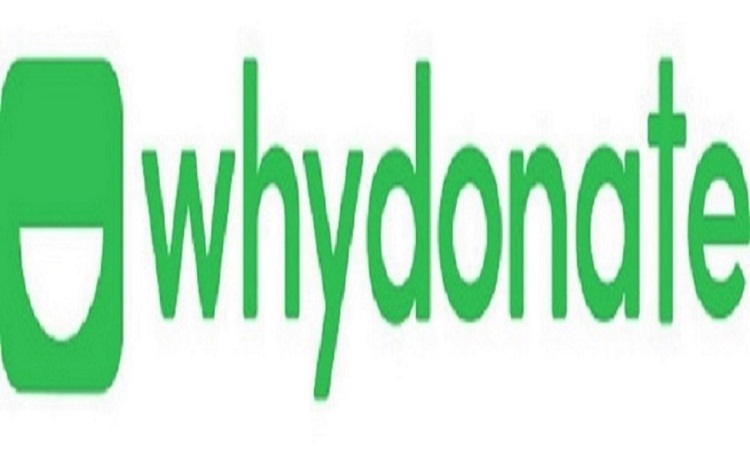Fundraising platforms have transformed how individuals, nonprofits, and communities raise money. From urgent medical expenses to ambitious social ventures, these platforms promise accessibility, simplicity, and exposure. But here’s a question most people never ask: Are all fundraising platforms truly helping your cause — or are some quietly profiting from your generosity?
This article challenges the common belief that “any platform is better than none.” We’ll explore what fundraising platforms really do, how their business models impact your donations, and what to consider before choosing one. If you’re planning a fundraiser or supporting one, understanding how these platforms work can make a major difference in your impact.
What Are Fundraising Platforms?
Fundraising platforms are online tools that allow individuals, charities, and organizations to collect donations through digital campaigns. Popular platforms include GoFundMe, Kickstarter, Indiegogo, and newer purpose-driven options like WhyDonate.
These platforms typically offer:
- Campaign creation tools
- Secure payment processing
- Social sharing features
- Donor tracking and analytics
On the surface, they seem like neutral, helpful intermediaries. But dig deeper, and you’ll discover they’re also businesses — with priorities that don’t always align with your cause.
The Hidden Costs Behind “Free” Fundraising
Many fundraising platforms advertise themselves as “free” or low-cost. But the reality is more complex. Here are four common ways these platforms make money:
1. Transaction Fees
Most platforms deduct 2%–7% from every donation. For example, a $1,000 campaign might lose $70 in fees before you even receive the funds.
2. Platform Tips
Some platforms use a “tip jar” model — asking donors to leave a voluntary tip to support the platform. While optional, this tactic can confuse donors and reduce the total donation to your campaign.
3. Subscription Tiers
Need premium tools like custom branding, email marketing, or donor reports? That’ll cost extra. Many platforms gate these features behind monthly subscriptions or upgrades.
4. Data Monetization
Donor data is incredibly valuable. Some platforms use this information for marketing, cross-promotion, or even sell it to third parties — often without clear consent.
Are Fundraising Platforms Helping or Hurting?
The biggest misconception about fundraising platforms is that they’re passive tools. In reality, they actively influence:
- Who sees your campaign
- How much people donate
- Whether your story trends or disappears
Here’s how:
🔹 Algorithmic Bias
Most large platforms promote trending or viral campaigns, which means those that don’t immediately take off may get buried. Your cause could be just as worthy — but far less visible.
🔹 Brand Dilution
Using cookie-cutter templates means your campaign may look like thousands of others. Without design flexibility, your unique story can lose its emotional impact.
🔹 Donor Gatekeeping
Some platforms limit how much donor data you can access. If you can’t contact your supporters directly, building long-term relationships becomes nearly impossible.
Ethical Concerns with Big Tech Fundraising
Companies like Meta and TikTok now offer built-in fundraising tools. While convenient, they raise several red flags:
- Data privacy issues: Are your donors’ details truly safe?
- Lack of transparency: Where do processing fees go?
- Algorithmic control: Will your fundraiser be visible without paid boosts?
In some cases, these corporate platforms benefit more from your fundraiser than you do.
Choosing the Right Fundraising Platform: Key Considerations
When selecting the best fundraising platform, it’s important to go beyond popularity. Ask these essential questions:
✅ 1. What Are the Total Fees?
Look for transparency in:
- Platform fee (% of each donation)
- Payment processing fees
- Hidden costs (currency conversion, withdrawal charges)
✅ 2. Who Owns the Donor Data?
Make sure you can:
- Access donor contact information
- Thank and re-engage your supporters
- Export data anytime without restrictions
✅ 3. Can You Customize Your Campaign?
The ability to:
- Use your branding
- Add personal images and videos
- Write freely without word limits
…makes your campaign more compelling and authentic.
✅ 4. Is It Easy for Donors?
User experience is everything. A platform should:
- Support multiple payment methods
- Be mobile-friendly
- Offer quick donation flows without forcing logins
✅ 5. Does It Align with Your Values?
Find platforms that:
- Support nonprofit causes
- Operate transparently
- Don’t exploit your community
The Rise of Niche and Ethical Fundraising Platforms
Not all fundraising platforms follow the same playbook. A new wave of ethical, community-first platforms is emerging — designed not just to process donations, but to empower change.
🔹 Examples of Value-Based Platforms:
- WhyDonate: Zero registration fees, transparent pricing, and European compliance (GDPR).
- Fundly: Designed for individuals and nonprofits with strong social integration.
- Givebutter: Known for live fundraising tools and no platform fees.
These platforms are often:
- Mission-driven
- Transparent with donors
- Supportive of smaller or local causes
Fundraising in 2025: A Reality Check
Here’s the uncomfortable truth: many people today use fundraising platforms not to launch creative projects, but to survive.
- Cancer patients fundraise for treatment
- Students seek tuition help
- Families raise money after job loss or war
Crowdfunding has shifted from being a tool of innovation to a tool of necessity. This shift means we must demand more from the platforms we use. More transparency. More equity. More empathy.
Conclusion: Fundraising Platforms Are Not All Alike
Fundraising is no longer just about telling your story — it’s also about choosing the right digital space to tell it in.
Before launching your next campaign, remember:
- Some fundraising platforms take more than they give
- Visibility can be bought or suppressed
- Your donors deserve transparency, and so do you
Look for platforms that respect your voice, protect your data, and prioritize impact over profit.
💡 Ready to Start Ethical Fundraising?
✔️ [Register now with WhyDonate — 100% free to get started]
✔️ [Donate to a cause you care about]
✔️ [Create your own campaign in minutes and share your story]
Choose a fundraising platform that works for you, not just with you.
FAQs: Fundraising Platforms
Q1: What is a fundraising platform?
A fundraising platform is an online tool that allows individuals or organizations to collect donations digitally. It includes features like campaign pages, payment gateways, and social sharing tools.
Q2: Are all fundraising platforms free?
No. Most platforms charge processing fees, platform fees, or request voluntary tips from donors. Always check the pricing page before launching your campaign.
Q3: Which fundraising platform has the lowest fees?
Platforms like WhyDonate and Givebutter offer no platform fees, charging only standard payment processing costs. Always compare platforms based on your location, campaign type, and required features.









